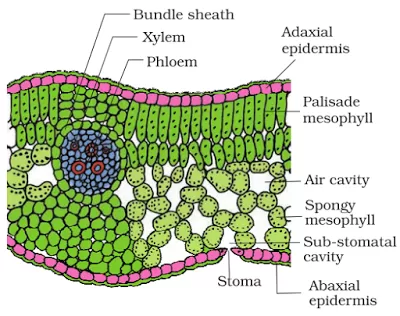How a Dorsiventral Leaf is Adapted for Photosynthesis. It is generally accepted that the pal- isade tissue prevails in the mesophyll of dorsiventral leaves and makes a major contribution to their photo- synthesis [2, 3, 5, 6]. The spongy tissue was supposed to be of minor importance for CO2 fixation and perform other functions
Photosynthesis is the process by which plants use sunlight, water, and carbon dioxide to create oxygen and energy in the form of sugar.
What is a Dorsiventral Leaf?
- Dorsiventral leaves
Dorsiventral leaves orient themselves at an angle to the main axis and perpendicular to the direction of sunlight. Most dicots have dorsi-ventral leaves that are net-veined, including most trees, bushes, garden plants and wildflowers. - Isobilateral leaves
Isobilateral leaves orient themselves parallel to the main axis and parallel to the direction of sunlight. Most monocots possess parallel-veined isobilateral leaves, including grasses and grasslike plants, lilies, irises, amaryllises etc.

Video Lesson
How a Dorsiventral Leaf is Adapted for Photosynthesis
Dorsiventral Leaves have a large surface area so more light hits them. The upper epidermis of the leaf is transparent, allowing light to enter the leaf. The palisade cells contain many chloroplasts which allow light to be converted into energy by the leaf. The leaf also has air spaces which allow better diffusion of carbon dioxide into the leaf.
